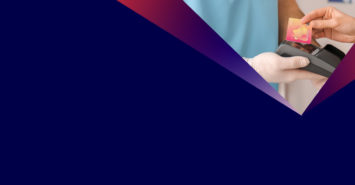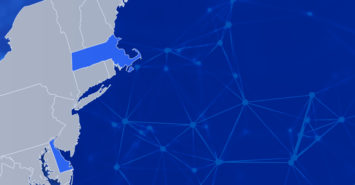Healthcare Insider
Looking for industry insight? You came to the right place.
Access our blog and newsletters to stay up to date on the latest happenings at TriZetto Provider Solutions and within the industry.
Outsourced services, including medical billing, is expected to reach $29.3 billion by 2030. As digitization within #healthcare streamlines workflows, practices need to adopt advanced RCM tactics or risk falling behind. We’ve gathered the latest insights, along with tips to determine if a third party partnership is right for your organization.
The Provider Enrollment, Chain, and Ownership System – commonly known as PECOS – is the go-to online enrollment management system. It allows registered users to enroll as a Medicare provider or supplier, revalidate enrollment, electronically sign and submit forms, and more. Is your practice set up to follow the proper enrollment guidelines? Our new article uncovers how the use of a delegated authority that helps securely manage your enrollments within PECOS can ensure your credentialing is safe.
Industry experts believe that the number of payvider organizations will grow as more healthcare organizations look to diversify payment models and expand patient-centric capabilities. The value-based care model carries increased risks and benefits, and insurers and providers joining forces to increase the quality of care and minimize their financial risk can be a beneficial outcome for all parties involved. As the industry continues to evolve and organizations adapt, how will this organizational trend move the needle toward a more efficiently effectively managed revenue cycle?
The time-consuming credentialing process gets even more complicated when closed panels come into play. How can physicians gain access when denied enrollment and ensure revenue?
We explore the options practices can take when closed panels cause a credentialing delay. Read our latest article for best practices to navigate the issue.
We live in a digital world. From smart phones to the internet to digital devices, technology is all around us. In fact, many of us use advances like augmented reality, voice assistance, blockchain or machine learning on a daily basis. While many industries utilize these technologies to enhance their products and services, unfortunately, it seems as though healthcare is playing catch up.
When the No Surprises Act went into effect on January 1, 2022, it raised more questions than answers for many physicians and administrators. More often than not, healthcare leaders were left wondering how, and when, they could be affected. It’s clear that a learning curve exists when it comes to the No Surprises Act.
Accuracy is critical when it comes to credentialing. And with more than 85 percent of applications currently done online, physicians are heavily dependent on technology and automation. While digital applications may be a more efficient method than putting pen to paper, this streamlining also brings high risk.
At TriZetto Provider Solutions, we understand that data security is an important issue for our SaaS platform clients. Protecting our clients’ data in transmission and at rest remains one of our top priorities. We know how critical it is to keep protected healthcare information (PHI) secure and we continue to invest the effort and expense necessary to meet industry compliancy standards for data security.
Healthcare providers are being squeezed. Revenue streams are shifting with lower cost venues and reimbursement rate changes. Inflation and changing supply costs are driving expense-side challenges. How can practices not only navigate, but solve, the cash flow crunch? C2FO, a TriZetto Provider Solutions platinum partner, shares their best practices and cash flow solutions that will help your practice thrive.
With two more states recently joining the list of locations that allow Full Practice Authority, many nurse practitioners are exploring the option of operating independently. As the need for qualified healthcare professionals continues to grow and the ability for NPs to practice independently continues to increase, quickly gaining credentials and navigating compliance challenges becomes more and more important.
In today’s ASC Environment, providers are constantly looking for ways to improve workflows, provide impeccable patient care and become financially healthy. Our partner, ShareableForms shares their best practices on how to improve efficiencies that your patients, staff and bottom line will be grateful for.
With healthcare costs on the rise and an increasing segment of uninsured consumers, the patient payment landscape is changing rapidly. How can medical offices evolve and optimize collections while keeping patient satisfaction high? Thankfully advancing technologies are making it easy to simplify collection processes to increase revenue.
When it comes to optimizing operations, automation is key. According to the CAQH Index report, the healthcare industry can save more than $16 billion by transitioning to fully electronic transactions. Discover the opportunities for healthcare providers to enhance operational processes and grow their business.
With vaccinations on the rise and many Americans returning to work and school, what’s ahead for healthcare? We spoke with Bobette Flagel, Director, RCM Services at TriZetto Provider Solutions, for a deep dive into the pandemic’s impact on claim volume, billing & operations. Hear lessons learned over the course of the last year, plus easy-to-implement best practices that can help practitioners move forward.
To comply with Medicare revalidation requirements, providers need to be aware of the requirements and timelines. If deadlines are missed or submissions are incomplete, providers can be terminated from the program and required to reapply. Until a new application is processed and approved, which can cause delays and disrupt the revenue cycle.
Nearly half of U.S. states allow nurse practitioners to operate on their own, and credentialing is a critical component for those looking to establish their own practices. What do nurse practitioners need to know before becoming a standalone provider, and what is the simplest way to gain credentials?
Telemedicine, staffing issues and other changes caused by the COVID-19 pandemic are uprooting the way medical practices are managed. Obviously healthcare has been thrown through a loop this past year, and healthcare professionals are eager for a return to normalcy. How can practices navigate the unknown and succeed in 2021?


































































